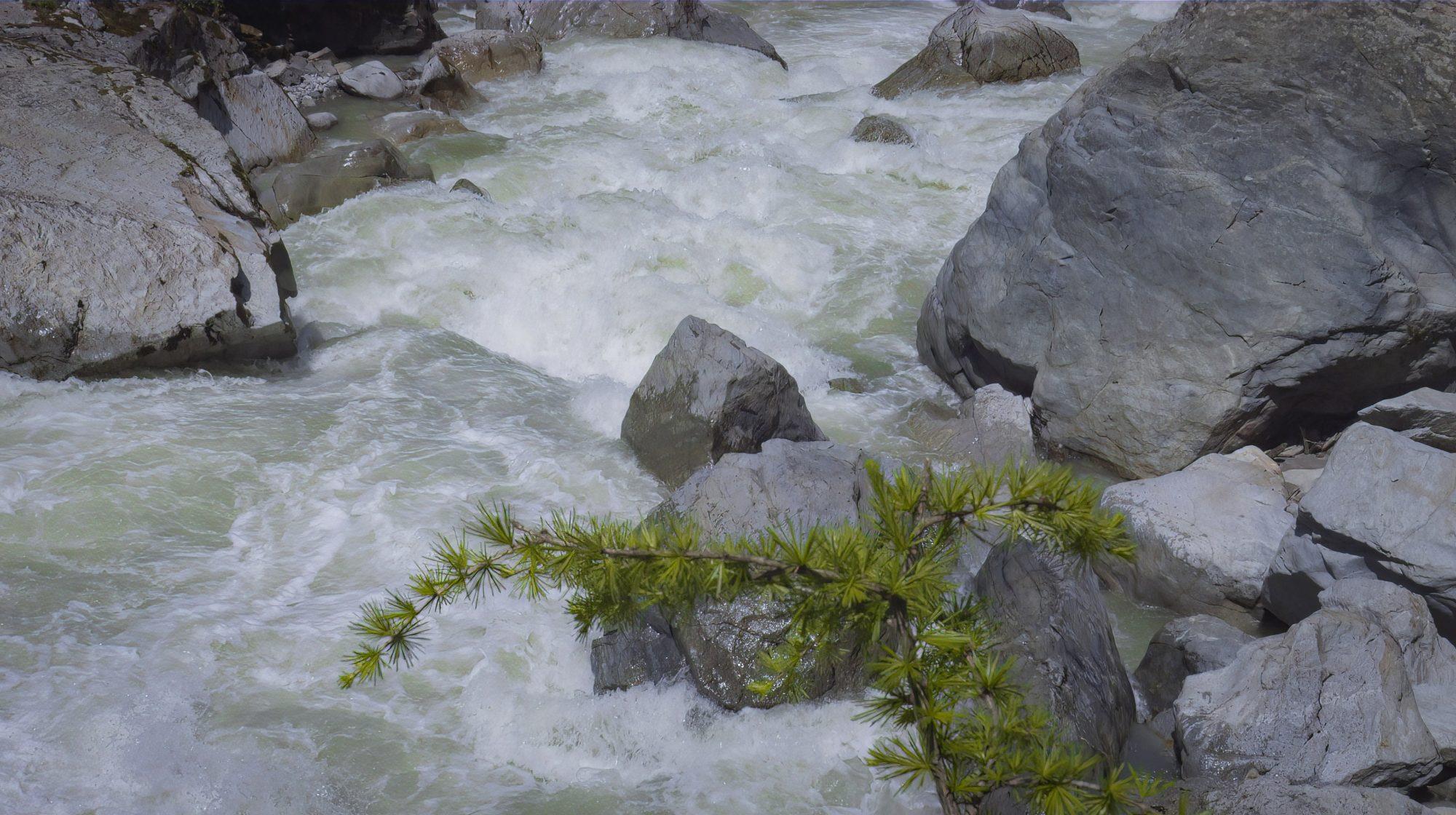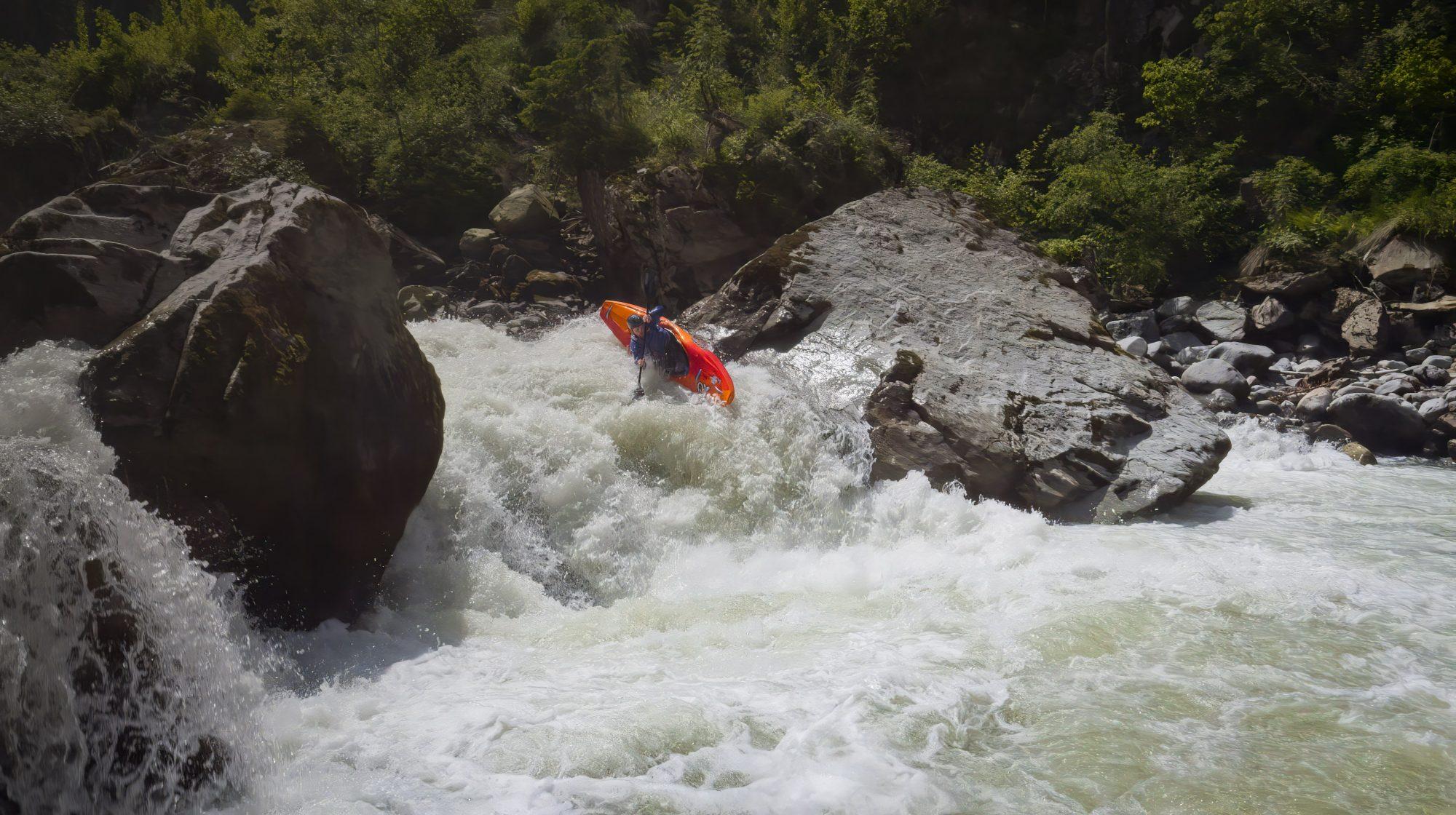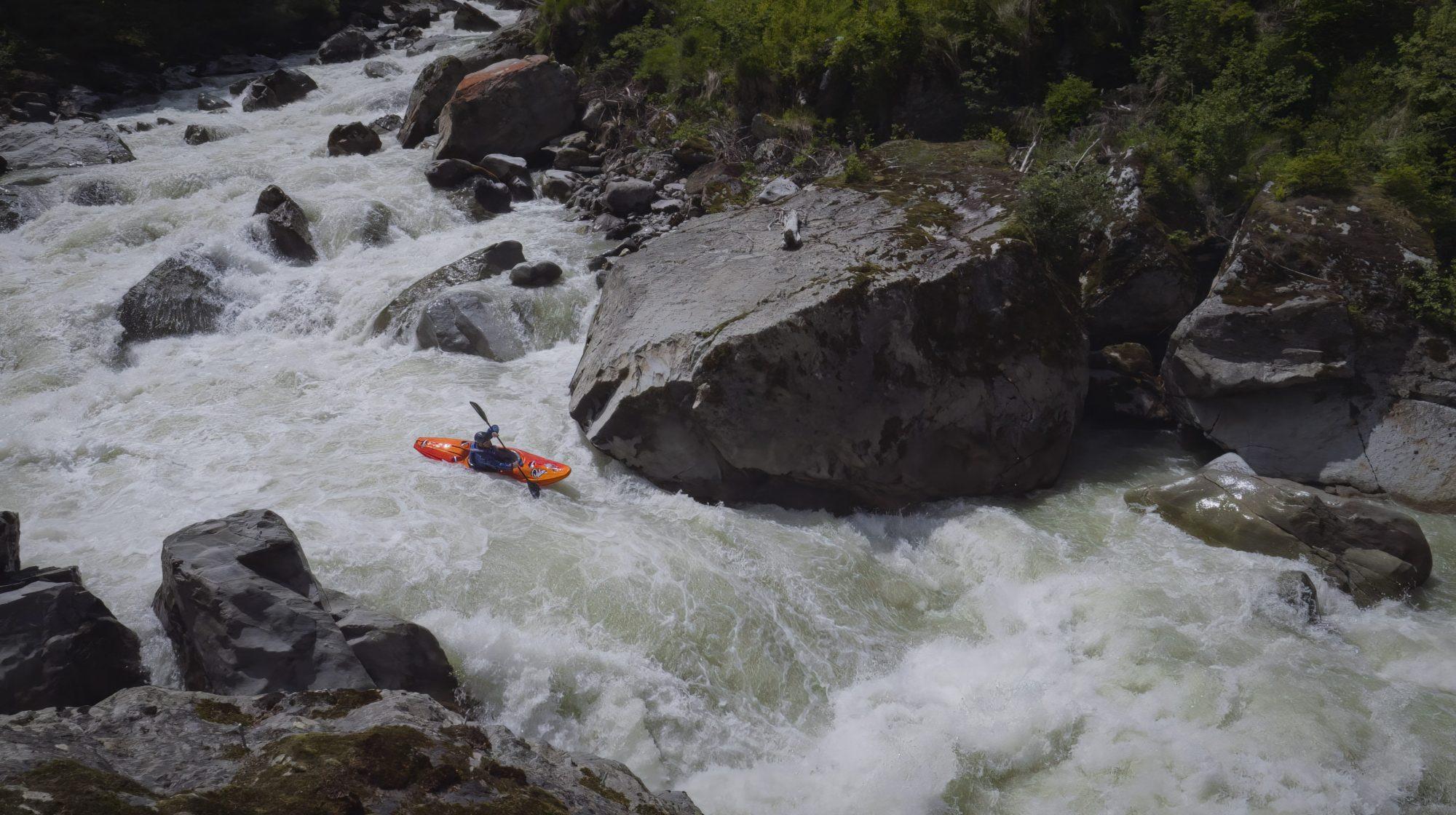Rivers are always changing, that’s part of their magic. It’s nature’s dance between an unstoppable force and immovable objects. The soft river smooths the rough hard rocks, rounds the edges, shapes them, places them just so, carves its way through them and occasionally tosses huge boulders aside. The powerful, flowing water forces small rocks deep into the cracks in between the big rocks, sediment fills in the gaps between the small rocks. Combing to create a strong intricate structure – the foundations for dynamic, natural pieces of art – rapids.
As the gradient of a river increases and its width decreases, the more critical each placement of a rock within the rapid. It’s a delicate balance and a fine line between creating something wonderful and something terrible. Nature seems not to care. As kayakers, we are constantly interpreting these river forms. Those interpretations change with the seasons, the years, technology and the motivation of people committed to following the river’s dance. The river changes, sometimes for the best and sometimes for the worse. In my time I have seen beautiful waterfalls collapse into hideous siphons and rock piles. It’s sad for me when this happens but I have to appreciate that somehow in the thousands of years, the river has been reshaping itself, it was really good for kayaking during a period in time where I am on this planet, and that’s pretty special. Rivers are always changing, that’s just nature and the way of things … or is it?

I woke up early on a Tuesday morning to photos from John Haines. I peered blearily at the photos, my caffeine-starved brain still booting up and coming online, trying to make sense of what was in front of me. An unfamiliar, familiar rapid? A text comes through from John, ‘The Wellerbrucke has changed’.
My brain snapped into focus, sans coffee.
(Insert swear words of choice here) – he’s right!
… but something’s not right about this …
This piece of river has always been changing. Whether from the freeze-thaw process of ice in the winter or the peak, powerful flows of summer shifting rocks around. The time period when this rapid changed seemed strange. I was kayaking down the river just a day or two before John’s text and it was mostly the same as it has been in seasons past. The river had not even come close to reaching its peak flow – the Wellerbrucke is the piece of the river you normally kayak at the start or end of the season, when flows are low and this complex piece of river is still realistic to kayak down, though that’s always open to interpretation.

For it to change at this point in the season was very strange. The day before it changed the newly completed Tumpen Dam had just finished a flushing exercise. When this happens they open the taps on the dam and force the water they have been holding back downstream to clear the sediment deposits that form at the dam. These flushings pose the most dangerous threat to kayakers on the river and one group of kayakers was caught out by one of these in the past. It’s essentially a manmade flash flood event. I wonder about that rapid surge of water and the raw power it contains pushing things around to change the rapids. The river primarily gets its water from the glacier feeding into the river at the top of the valley, it’s a gradual increase in volume as the water travels many kilometres downstream, this part of the river doesn’t see the volume of water increase that quickly naturally. Perhaps it could have something to do with it, but speaking to the team at Save Our Rivers it seems more likely that the dam withholding sediment directly above the section has impacted the rapid’s structural integrity. Without the sediment and small rocks to reinforce the bigger rocks, things are much weaker and much more likely to collapse or be moved around. This is likely behind the changes to one of the most important rapids in the sport of kayaking.
Time and time again I see nothing but short-sightedness, a lack of empathy for the environment and ulterior motives behind hydropower projects. I doubt I could prove it but I had to share my thoughts on this significant change to the Wellerbrucke. Fortunately for now there is still a line but will this change in the future, could the legendary ‘Championskiller’ become un-runable? Honestly, I think it could and I am anxious to see what happens later in the summer when the peak flows recede and reveal this section of river again.

It’s too late to turn back the clock on this change but it’s not too late to put our efforts into protecting this river. A new, larger dam project is planned to be built in this valley, it is currently still possible for us to stop it but the odds are against us, as they always are with hydropower projects. As they always are when a small group of passionate people with no monetary motivation face off against big corporations. Just because the odds are against you doesn’t mean that you can’t win the fight but it does mean that you have to work hard and be creative.
If you care about this river or the environment in general it is not enough for you to sign this petition, you have to share it with your friends, colleagues, acquaintances or anyone else you have contact with.
If you need an answer as to why they should at least read about the project, if not sign the petition, it could be that currently, it’s more important than ever to let nature just be nature. To not interrupt it, to try and caress our planet’s natural process back into order.
Or it could be as simple as you care about something and you don’t want to see the thing that’s important to you destroyed.
Or better yet it could be your own personal reason.
Whatever the reason, it’s just important that you do something.
Signing and sharing the petition below is an easy way to do something.
Thank you to everyone single person on that signature list. I hope to catch you on the water or in the bar and be able to tell you how rad you are for caring about this river!
For more information on protecting this river and other rivers around the world, please follow the Free Rivers Fund, WET, Save Our Rivers
Bren Orton
*These are just my opinions as always with anything you read on the internet, do your own research, draw your own conclusions.